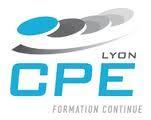Date Sur Demande
Formation : Échantillonnage des solides divisés - Bases et applications
France, Lyon
CONTENU PÉDAGOGIQUE
INTRODUCTION A L’ECHANTILLONNAGE DES SOLIDES DIVISES
- Principes de l’échantillonnage
- Méthodes de résolution d’un problème d’échantillonnage
- La carte heuristique et l’arbre de résolution
RESOLUTION D’UN PROBLEME D’ECHANTILLONNAGE REPRESENTATIF
- Echantillonner : pourquoi faire ?
- Les buts : justesse? Répétabilité? Reproductibilité? Représentativité ?
- Echantillon représentatif? Spécimen? Produit ?
- Echantillonner : quoi ?
- Les solides divisés : grains et poudres
- Les solides divisés : hétérogénéités - homogénéités
- Ségrégation dans les solides divisés
- Cohésion dans les solides divisés
- Aptitude aux mélanges
- Echantillonner : comment ?
- Construction de la base d’échantillonnage
- Pondération de la ségrégation
- Choix d’un procédé
- Choix d’une méthode d’échantillonnage
- Echantillonner : combien ?
- Loi de GY : la pondération de l’hétérogénéité et la droite de sécurité
- Définition de la grappe élémentaire
- Nombre de grappes
- Echantillonner : avec quoi ?
- Matérialisation du procédé
- Notions de correction
- Echantillonner : quelle erreur d’échantillonnage?
- Echantillonner : quel coût ?
PROCEDES D’ECHANTILLONNAGE
- Les méthodes par prélèvements
- Les méthodes par partage
EXAMEN DE QUELQUES CAS INDUSTRIELS
- Industrie minérale (norme AFNOR)
- Industrie agro-alimentaire et pharmaceutique (règles FDA)
ETUDES DE CAS POSES PAR LES STAGIAIRES
LES PRELEVEURS D’ECHANTILLONS
- In situ : portatif, manuel
- Sur process : en ligne, automatique
